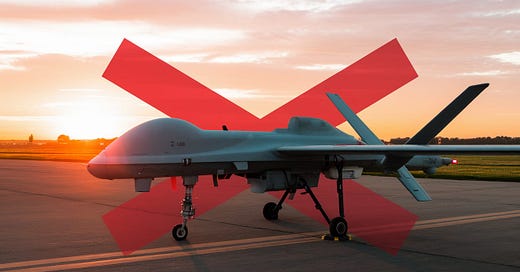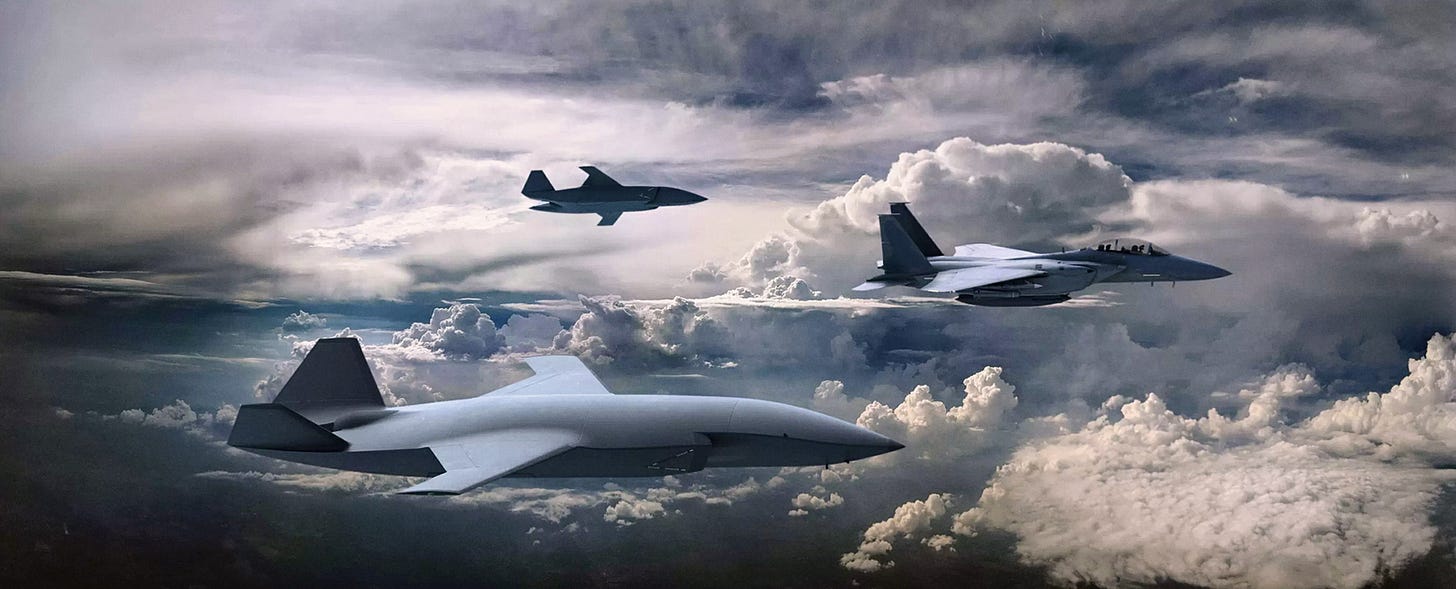The Promise and Perils of Disaggregated Air Superiority
Examining Collaborative Combat Aircraft (CCA) premises, we analyze the validity of the proposed benefits, challenges, and practical implications of disaggregation.
The Engineer's Perspective is a reader-supported publication. Sign and up and subscribe to see more in-depth Aerospace/Aeronautical Analysis!
Table of Contents:
Overview:
The Aggregation Paradox: Sensor Distribution and System Costs
The promise
The Challenge: Budgets, Specialization, and Data Integration
Attrition Tolerance: Strength in Numbers?
The Promise
The Challenges:
Tactical Considerations
Verification and Validation
The Achilles’ Heel:
The Challenge of Datalinks
Addressing The Challenges
Conclusion
References
Overview:
In the evolving landscape of modern warfare, the concept of air superiority is undergoing a significant transformation. The introduction of Collaborative Combat Aircraft (CCAs) presents both opportunities and challenges in achieving and maintaining dominance in the skies.
This analysis explores the idea of disaggregating air superiority through CCAs, examining the potential benefits and the hurdles that must be overcome.
The concept of CCAs represents a paradigm shift in aerial warfare strategy. Traditionally, air superiority has been achieved through the deployment of advanced, manned fighter aircraft capable of outperforming and outmaneuvering enemy forces.
However, as the cost of these high-performance aircraft continues to escalate and potential adversaries develop increasingly sophisticated anti-access/area denial (A2/AD) capabilities, military strategists are looking towards unmanned systems to complement and extend the capabilities of manned aircraft.
CCAs offer the potential to disaggregate the functions typically consolidated in a single, expensive platform across multiple, less expensive unmanned vehicles, potentially changing the economics and tactics of air combat.
This shift towards disaggregation through CCAs is not without its complexities and potential pitfalls. The following analysis examines how this new approach to air superiority impacts everything from cost structures and attrition tolerance to the fundamental nature of command and control in aerial combat.
Furthermore, it explores the technological challenges that must be overcome, particularly in the realms of communication and autonomous decision-making, to make the vision of CCA-enabled air superiority a reality.
By understanding these opportunities and challenges, it becomes possible to better grasp the potential future shape of air warfare and the steps necessary to maintain strategic advantage in an increasingly complex battlespace.
Keep reading with a 7-day free trial
Subscribe to The Engineer's Perspective to keep reading this post and get 7 days of free access to the full post archives.





